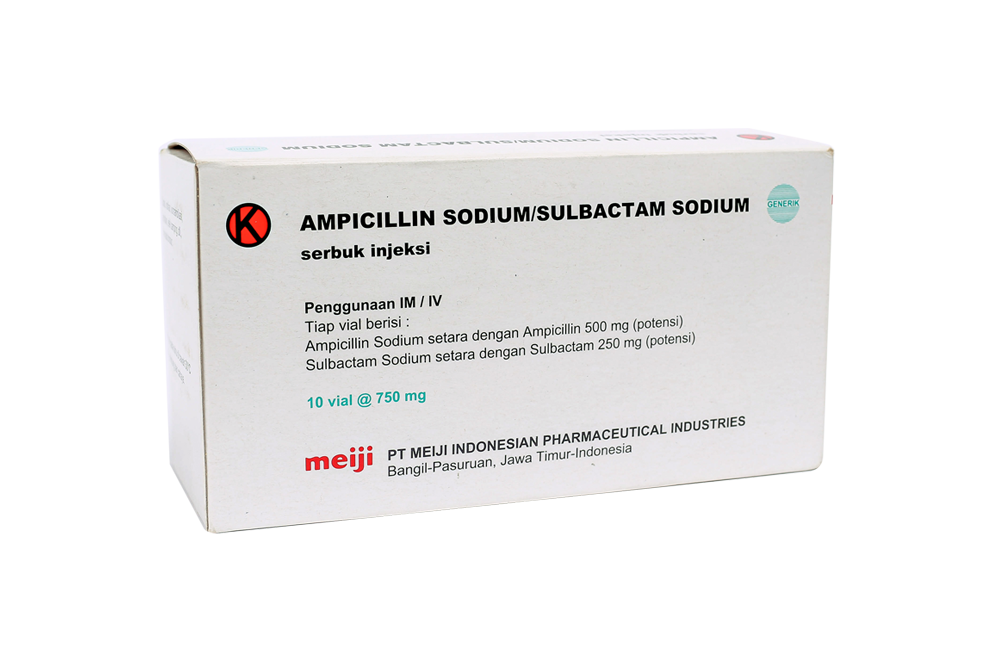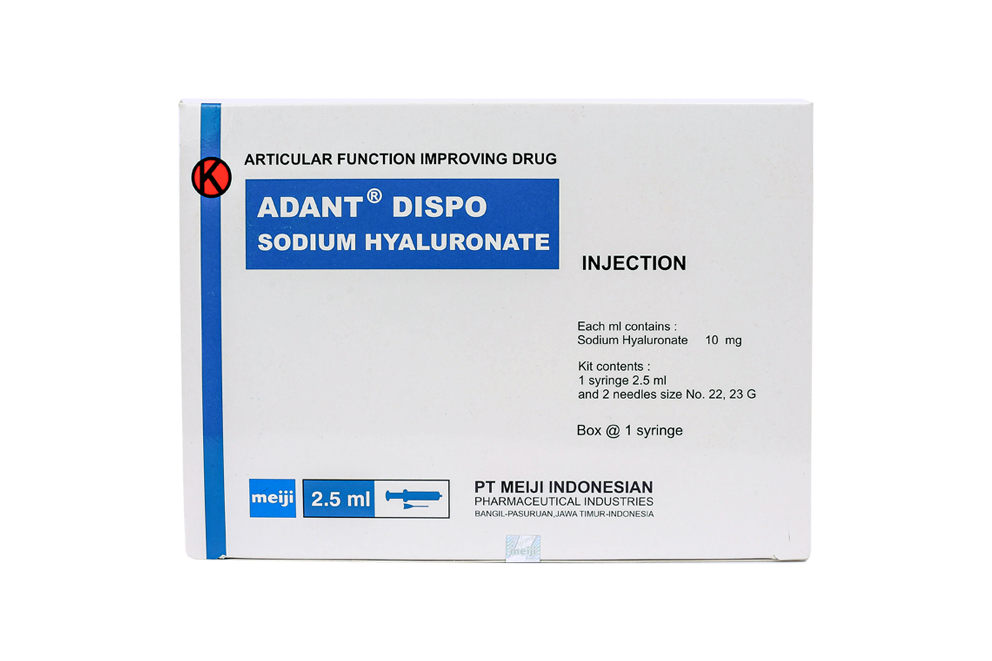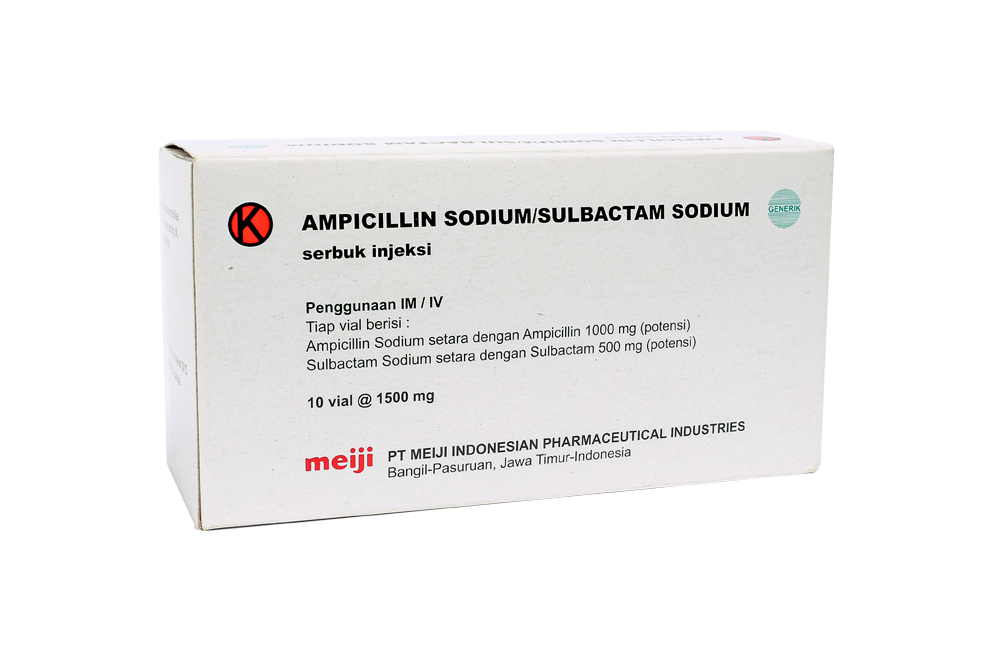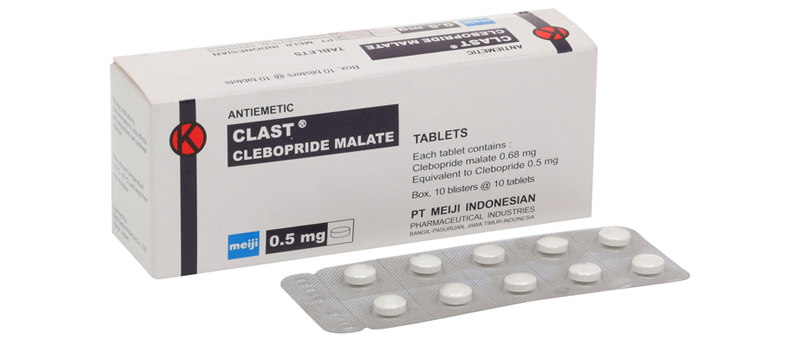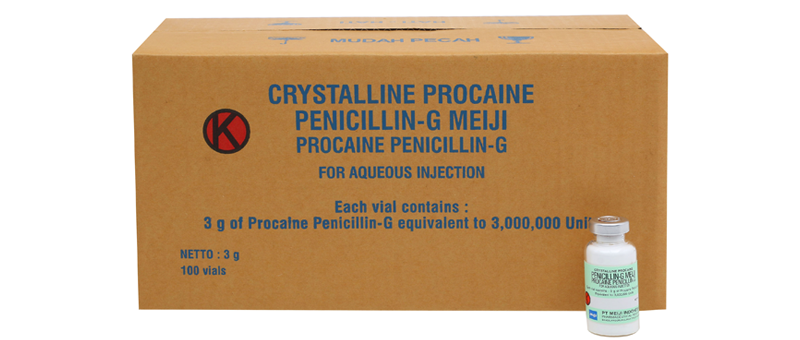AMPICILLIN SODIUM/SULBACTAM SODIUM 750 mg
AMPICILLIN SODIUM/
|
||||||||||||||
|
Composition |
||||||||||||||
|
Product Category |
||||||||||||||
|
Indications AMPICILLIN SODIUM/SULBACTAM SODIUM powder for injection may also be administrated peri-operatively to reduce the incidence of post-operative wound infections in patients undergoing abdominal or pelvic surgery, in which peritoneal contamination may be present. In termination of pregnancy by caesarean section, AMPICILLIN SODIUM/SULBACTAM SODIUM powder for injection may be used prophylactically to reduce post-operative sepsis. |
||||||||||||||
|
Dosage and Administration Table 1. Possible dilution
For IV administration, AMPICILLIN SODIUM/ SULBACTAM SODIUM powder for injection should be reconstituted with Sterile Water for Injection or any compatible solution and allowed to stand to allow any foaming to dissipate to permit visual inspection for complete dilution. The dosage can be given by bolus injection over a minimum of 3 minutes or can be used as greater dilutions either as bolus or as an IV infusion over 15 – 30 minutes. Meiji ampicillin sodium/sulbactam sodium parenteral may also be administrated by deep IM injection; if pain is experienced, 0.5% sterile solution for injection of lidocain HCl anhydrous may be used for reconstitution of the powder. Usual Dosage Range: 1.5 – 12 g/day in divided dose every 6 or 8 hours up to a maximum daily dosage of Sulbactam of 4 g. Less severe infection may be treated on every 12 hours schedule. (see table 2) Table 2. Usual dosage range
The dosage of AMPICILLIN SODIUM/SULBACTAM SODIUM powder for injection for most of infection in children, infants and neonates are 150mg/kg/day (corresponding to sulbactam 50mg/kg/day and ampicillin 100mg/kg/day). For children, infants and neonates, dosing is usually every 6 or 8 hours in accordance with the usual practice for ampicillin. In neonates during the 1st week of life (especially pre terms), dosing is usually every 12 hours. More or less frequent dosing may be indicated depending on the severity of the illness and the renal function of the patient. Treatment is usually continued until 48 hours after pyrexia and other abnormal signs has resolved. Treatment is normally given for 5 – 14 days, but the treatment period may be extended or additional ampicillin may be administrated in severely ill cases. Inpatient with severe impairment of renal function (creatinine clearance < 30 mL/minute), the elimination kinetics of sulbactam and ampicillin are similarly affected, and hence the plasma ratio of one to the other will remain constant. The dose of AMPICILLIN SODIUM/SULBACTAM SODIUM powder for injection in such patients should be administrated less frequently in accordance with the usual practice of ampicillin. In treating patients on restricted sodium intake, it should be noted that 1500mg of AMPICILLIN SODIUM/SULBACTAM SODIUM powder for injection contains approximately 115mg (5mmol) of sodium. For prophylaxis of surgical infections, 1.5 – 3g AMPICILLIN SODIUM/SULBACTAM SODIUM powder for injection should be given at induction of anesthesia, which allows sufficient time to achieve effective serum and tissue concentration during the procedure. The dose may be repeated 6 – 8 hourly; administration is usually stopped 24 hours after the majority of the surgical procedures, unless a therapeutic course of AMPICILLIN SODIUM/SULBACTAM SODIUM powder for injection is indicated. |
||||||||||||||
|
Contraindications |
||||||||||||||
|
Adverse Drug Reactions Gastrointestinal: The most common were nausea, vomiting, and diarrhea. Skin/Skin Structure: The most common were rash, itching and other skin reactions. Hematopoietic and Lymphatic Systems: Anemia, thrombocytopenia, eosinophilia, and leucopenia have been reported during therapy with sulbactam sodium/ampicillin sodium. These reactions are reversible on discontinuation of therapy and are believed to be sensitivity reactions. Hepatic: Transient elevations of alanine and aspartic transaminases have been observed. Since infectious mononucleosis is viral in origin, ampicillin should not be used in the treatment. A high percentage of patients with mononucleosis who receive ampicillin develop a skin rash. |
||||||||||||||
|
Storage After reconstitution, the concentrated solution is stable in the room temperature (25º ± 2ºC) within 1 hour and stable in refrigerator (< 5ºC) within 24. |
||||||||||||||
|
Packaging and Registration Number |
